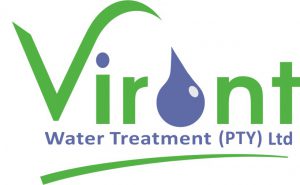Sewage Treatment Overview
Sewage treatment is the process by which domestic wastewater is cleaned by removing the contaminants introduced into the water by human activity. Sewage typically includes household waste liquids from toilets, baths, showers, kitchens and sinks etc. that have been disposed of via the sewer. In many areas sewage can also include liquid waste from industry and commerce. The bulk of the contaminants consist of organic waste matter and nutrients such as nitrogen in the form of ammonia that have been generated as waste products from the human body, as well as phosphate salts from washing powders and soaps. Removing this organic matter and nutrients from the waste stream and thereafter disinfecting the water to kill pathogens before it is released back into the natural environment forms the basis of sewage treatment. Releasing this organic matter into the natural environment untreated in sufficient quantities results in surface water bodies such as dams turning into cess pools of rotting material that break down the ecology of the water body. Excessive nitrogen and phosphorous nutrients causes eutrophication, which results in the overgrowth of weeds and algae. Such a rapid growth of algae is unsustainable and eventually most of them die, taking up most of the available oxygen in the water in the process of decomposing so that other the water becomes uninhabitable for the useful organisms that sustain the ecology of the water body. Some algal species also produce toxins that contaminate drinking water supplies in addition to causing deoxygenation of the water. Pathogens released into a surface or underground water body can eventually make their way back into drinking water supplies.
Although southern Africa has the poorest record for sewage treatment worldwide, with most effluent remaining untreated, South Africa’s sewage treatment is very advanced and the country has been a world leader in nutrient removal for many years. Paradoxically though, there are some areas of South Africa that still aren’t getting their sewage treated, such as many rural areas and informal settlements in the suburban areas of some cities.
Sewage can sometimes be treated on the premises where it is generated by means of septic tanks with soakaways; aerobic systems such as biofilters; or anaerobic systems such as digestors or peat; or it is collected and transported via a sewerage system consisting of a network of sewer pipes and pump stations to a central treatment plant. At the treatment plant the sewage undergoes various physical, chemical, and biological processes to remove the organic and nutrient contaminants before it is disinfected for release back into the environment. In some cases the black water and grey water streams are separated in two different reticulation networks, depending on their suitability to do this, and the grey water is diverted for irrigation purposes or where necessary treated for purposes such as washing down uses –. Typically the process of removing the contaminants from the water results in a waste sludge that is either disposed of separately or treated further also for release back into the environment, or in some cases processed as fuel.
Sewage treatment typically consists of four stages:
- Preliminary treatment is where inorganic solids are mechanically removed using screens, grit channels and scrapers. Typical solids include condoms, tampons, ear-buds, plastics, rags, sand and any other foreign objects people might put down their toilets.
- Primary treatment consists of retaining the sewage temporarily in a stilling basin where heavy solids can settle to the bottom and be mechanically removed by draining or pumping off. Oil and grease as well as other floating objects not trapped in the preliminary treatment is also removed at this stage and the remaining liquid is transferred to the secondary treatment stage.
- Secondary treatment is where organic matter contaminants suspended and dissolved in the water is removed together with nutrients such as nitrogen and phosphorous. This is achieved using indigenous, water-borne micro-organisms in a controlled environment and due to the growth of these organisms a sludge is produced that is typically settled out and discharged or treated separately to the rest to the liquid which may need to undergo tertiary treatment.
- Tertiary treatment is where the effluent stream from the secondary treatment process is sometimes disinfected chemically or physically (for example by lagoons and microfiltration) prior to discharge into a surface water body, or if the quality allows into underground water. After tertiary treatment the water may be used for irrigating golf courses, fields and parks.
